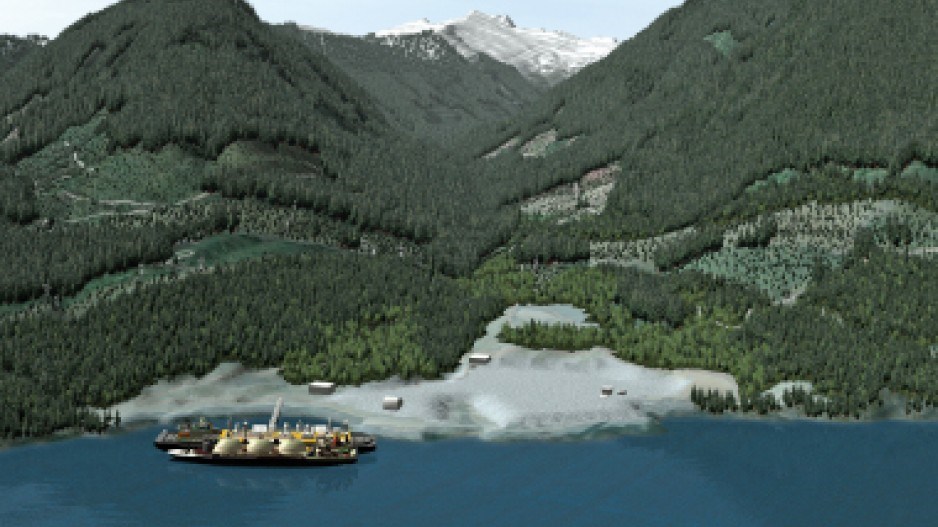BC’s headline-grabbing industrial boom has, thus far, been mostly a northern phenomenon: multibillion-dollar liquefied natural gas export facilities on the coast, gas wells in the northeast and lengthy pipelines connecting the two.
But aside from the massive energy developments looming over the north, another region in the province is the site of a prospective industrial renaissance, albeit to much less fanfare: Howe Sound.
The area – bounded, approximately, by West Van’s Whytecliff Park to the south, Squamish to the north and Gibsons to the west – has more than $2.5 billion in planned projects.
At McNab Creek, on the west side of Howe Sound between Gibsons and Squamish, Alberta-based construction aggregate supplier Burnco is planning a $40 million gravel mine.
Metro Vancouver is considering, among other sites in the Lower Mainland and Vancouver Island, a piece of Squamish Nation land at Port Mellon as the location for a new $500 million waste garbage incinerator. If selected, the facility will be built by Aquilini Renewable Energy, a subsidiary of the Aquilini Investment Group.
The centrepiece of industrial developments in Howe Sound is Woodfibre LNG, a small liquefied natural gas export facility planned for Western Forest Product’s (TSX:WEF)old Woodfibre pulp mill site in Squamish.
Woodfibre LNG is owned by Woodfibre Natural Gas Ltd., a subsidiary of Singapore-based energy giant Pacific Oil and Gas.
Byng Giraud, vice-president of corporate affairs at Woodfibre LNG, told Business in Vancouver that he expects the company to submit a formal application for an environmental assessment by next summer.
In December, the National Energy Board (NEB) granted Woodfibre LNG an export licence for 2.1 million tonnes of LNG annually for 25 years. The federal government is reviewing the decision. Its final verdict is expected by mid-2014.
“Our first milestone was the application to the NEB. In context, our application was about a 10th of the size of the guys up north, if that,” said Giraud.
“The next part is to put our project descriptions into the federal and provincial assessment processes. There is lots of work still to do.”
The facility will be supplied by a $350 million expansion of FortisBC’s Vancouver Island pipeline system. The natural gas pipeline runs from Coquitlam to Squamish, into the Woodfibre site, then onto the Sunshine Coast and across to Vancouver Island.
The proposed expansion would add a new 52-kilometre stretch of pipeline from Coquitlam to Woodfibre to supply the LNG facility, because Fortis doesn’t own any upstream assets and must buy the natural gas it hopes to export.
“With the existing system, we can’t provide the volumes they need,” said Carol Greaves, community relations manager for FortisBC.
“We have to do this upgrade for that.”
The pipeline expansion is undergoing an environmental assessment. Greaves said Fortis hopes to receive an environmental certificate for the project by the end of 2015 and begin construction in early 2016.
Both the scope and price tags of the projects pale in comparison to the mega-ventures planned for towns such as Prince Rupert and Kitimat.
But Howe Sound’s industrial reawakening, however modest, has residents worried about potential impact on area marine life because both the gravel mine and the LNG facility will increase vessel traffic in Howe Sound.
Pacific white-sided dolphins and herring have returned to the local waters in recent years after being absent for decades.
Ruth Simons, Lions Bay resident and executive director of the community group Future of Howe Sound Society, said she wants to see a “holistic” study done of the potential industry in Howe Sound that considers the cumulative effects of the projects on the area, including on the watershed.
“You know, we’re finding no one that doesn’t agree that there is a need to take a step back and get a better picture of what is going on in Howe Sound as a whole,” said Simons.
“It just keeps growing, this thing. The sentiment is most people are shocked that there is this much industrial development all at once.”
In 2008, the province published a Land Resource Management Plan (LRMP) for Howe Sound that focused on the area’s economy, including the agriculture, forestry, mining and energy sectors.
Liquefied natural gas exports were not considered in the report.
In 1996, “Howe Sound 20/20” detailed the area’s transition from a resource-based economy to one focused on tourism.
Because of those studies, in particular the LRMP, West Vancouver Sea-to-Sky MLA Jordan Sturdy said a new land resource plan “isn’t in the cards at the moment.”
But Sturdy acknowledged the aquatic turnaround Howe Sound has experienced and agreed that developing a model that measures the cumulative impacts of industrial development would help residents understand and better evaluate the looming changes to Howe Sound.
“Everything we do has an impact,” said Sturdy. “In this case, we need to understand what those are and be responsible.”
– With files from the Coast Reporter




